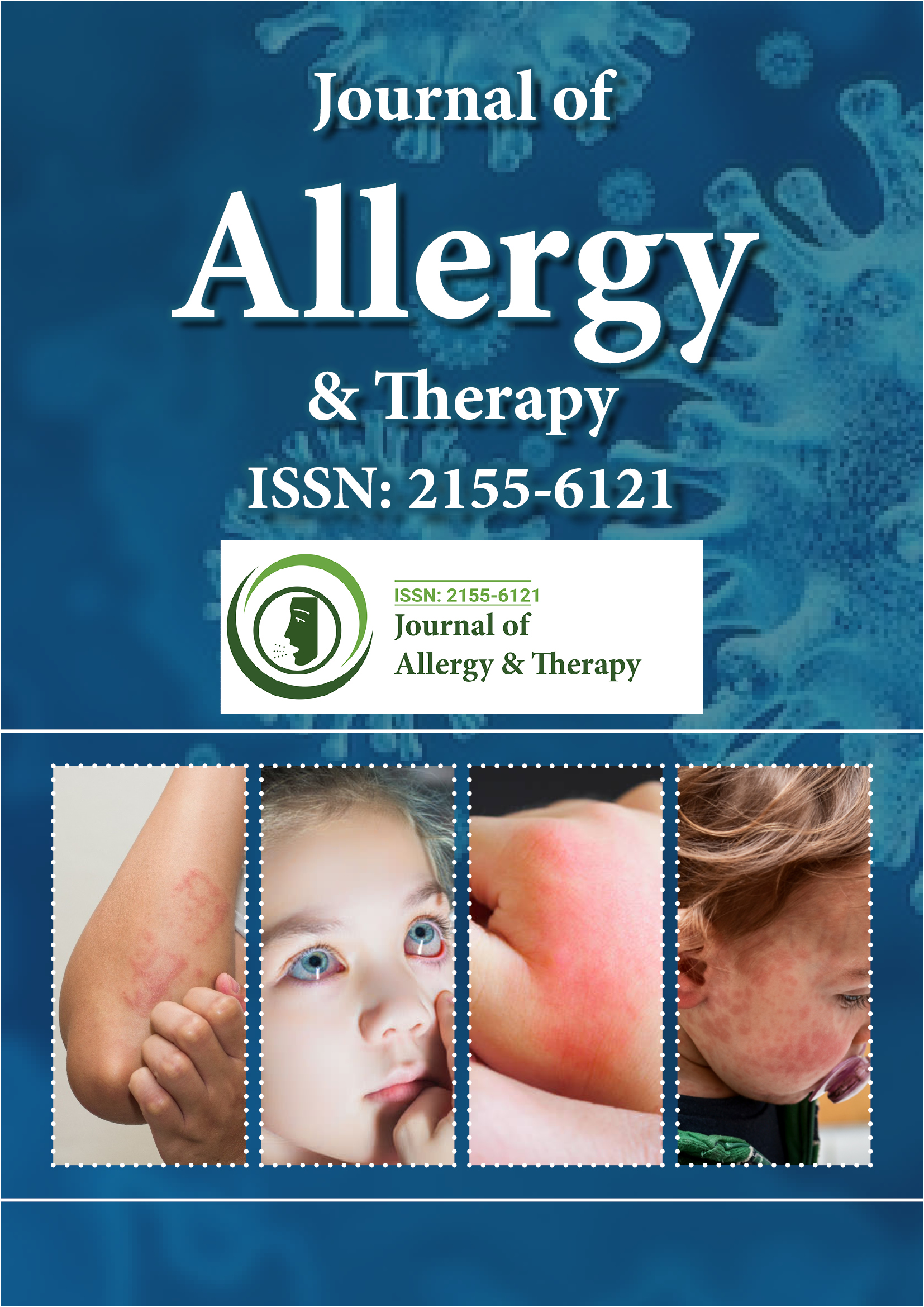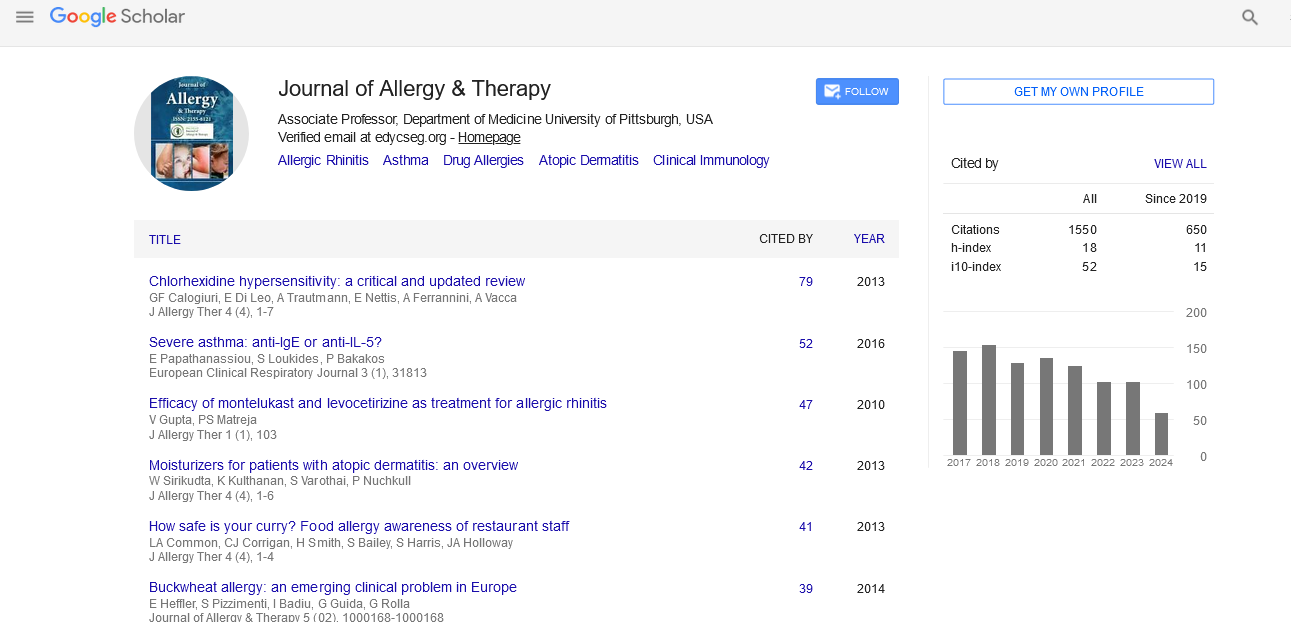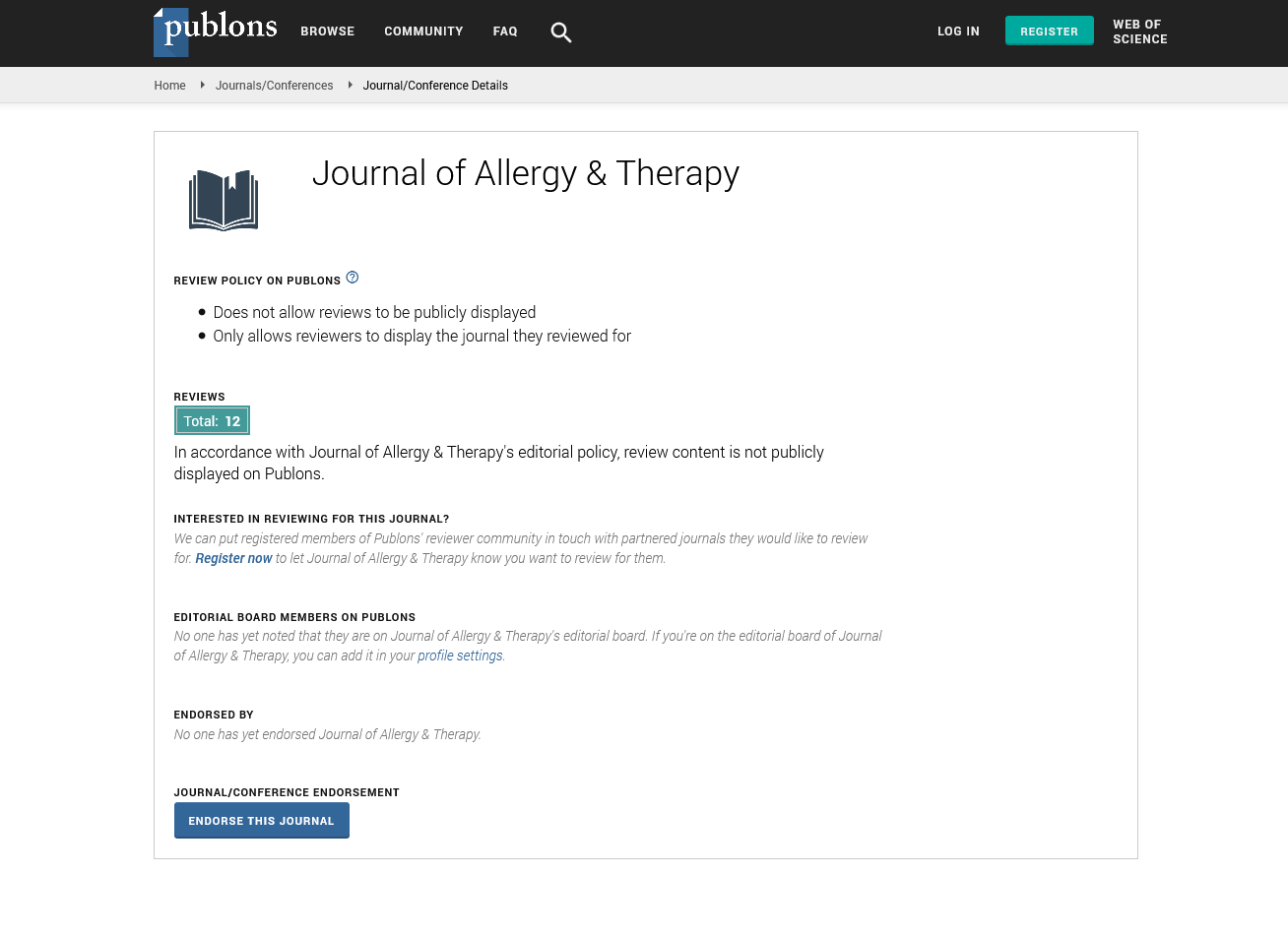Indexed In
- Academic Journals Database
- Open J Gate
- Genamics JournalSeek
- Academic Keys
- JournalTOCs
- China National Knowledge Infrastructure (CNKI)
- Ulrich's Periodicals Directory
- Electronic Journals Library
- RefSeek
- Hamdard University
- EBSCO A-Z
- OCLC- WorldCat
- SWB online catalog
- Virtual Library of Biology (vifabio)
- Publons
- Geneva Foundation for Medical Education and Research
- Euro Pub
- Google Scholar
Useful Links
Share This Page
Journal Flyer

Open Access Journals
- Agri and Aquaculture
- Biochemistry
- Bioinformatics & Systems Biology
- Business & Management
- Chemistry
- Clinical Sciences
- Engineering
- Food & Nutrition
- General Science
- Genetics & Molecular Biology
- Immunology & Microbiology
- Medical Sciences
- Neuroscience & Psychology
- Nursing & Health Care
- Pharmaceutical Sciences
Opinion Article - (2022) Volume 13, Issue 7
Development of New Preventative Methods and Pathogenesis of Allergic Contact Dermatitis
Aparecido Depeyre*Received: 04-Jul-2022, Manuscript No. JAT-22-17738; Editor assigned: 07-Jul-2022, Pre QC No. JAT-22-17738 (PQ); Reviewed: 22-Jul-2022, QC No. JAT-22-17738; Revised: 01-Aug-2022, Manuscript No. JAT-22-17738; Published: 08-Aug-2022, DOI: 10.35248/2155-6121.22.13.295
Description
The organ that is most commonly exposed to chemicals found in personal care items, household goods, or office supplies is the skin. In this context, skin conditions make up more than 40% of all occupational and work-related illnesses, placing a heavy cost on the public's health. Allergic Contact Dermatitis (ACD) is the most widespread occupational disease and the most typical type of immunotoxicity in humans among skin disorders. As a result of CD4+ and CD8+ T cells that have been primed and expanded, ACD is a skin inflammation caused by T cells. Localized skin rash, itching, redness, swelling, and lesions identify the clinical ailment, which is mostly diagnosed by a patch test. The majority of treatment for ACD following diagnosis is avoiding exposure to the allergen that causes flareups. The use of standard of care interim therapies, such as steroid creams or ointments, barrier creams, and moisturisers, is strongly advised when avoiding exposure is not possible.
Skin issues brought on by chemical contact are a developing hazard for occupational and environmental health. Considering the pathophysiological process involved, the two primary kinds of contact dermatitis-Irritant Contact Dermatitis (ICD) and Allergic Contact Dermatitis are Outlined.
The majority of cases of contact dermatitis, or Irritant Contact Dermatitis (ICD), occur in the workplace. It is characterised by skin damage caused by a direct and local cytotoxic influence over the skin's cells and can happen after a single exposure to an irritating or toxic substance (such as abrasives, cleaning, oxidising, and reducing agents). Burning, stinging, and smarting are among of the clinical signs of ICD, and they typically appear shortly after exposure. Additionally, as fissures form, the lesions progress from erythema to vesiculation and caustic burn, necrosis, and agony. Relevantly, low-grade irritants can delay the ailment's clinical expression. It can be an acute reaction brought on by a single exposure to a substance, such as chemical burns and UVA-triggered phototoxic ICD, or it can be a chronic reaction brought on by prolonged and repeated exposure to irritants like solvents, soap, and detergents.
20% of cases of contact dermatitis are caused by ACD. It is an unfavourable cutaneous inflammatory reaction brought on by direct skin contact with a particular foreign allergen to which people has already developed sensitivity. The primary and most common type of immunotoxicity in humans is represented by ACD. While it rarely affects persons above the age of 70, it affects people of all ages. Individuals who are repeatedly exposed to the sensitising agent develop clinical symptoms, which are frequently characterised by extreme itching, stinging, and pain along with clearly defined erythema and oedema. Many occupations, including those in the beauty and wellness industries, put people at risk for developing this skin condition. The hands are the most frequent site of manifestation, and effective therapy depends on a precise diagnosis. While exposure to a mild allergen may take months or years to cause sensitization, exposure to a powerful sensitizer causes sensitization in as little as a week or more.
The introduction of sensitising compounds is influenced by innovation and constantly evolving consumer behaviour. In fact, using household items is the leading cause of everyday exposure to scent allergens. More than 4000 chemicals are currently recognised as potential chemical sensitizers, and several new contact allergens are discovered every year, further broadening the range of recognised causes of ACD.
Because ACD is a complex disease with numerous various aetiologies and morphologies, treating it can be difficult and frequently necessitates using several different therapeutic modalities. Currently, the identification and subsequent elimination of any probable causative agent is necessary for the treatment of ACD; failing to do so increases the risk of developing chronic or recurring dermatitis.
Citation: Depeyre A (2022) Development of New Preventative Methods and Pathogenesis of Allergic Contact Dermatitis. J Allergy Ther. 13:295.
Copyright: © 2022 Depeyre A. This is an open access article distributed under the terms of the Creative Commons Attribution License, which permits unrestricted use, distribution, and reproduction in any medium, provided the original author and source are credited.


